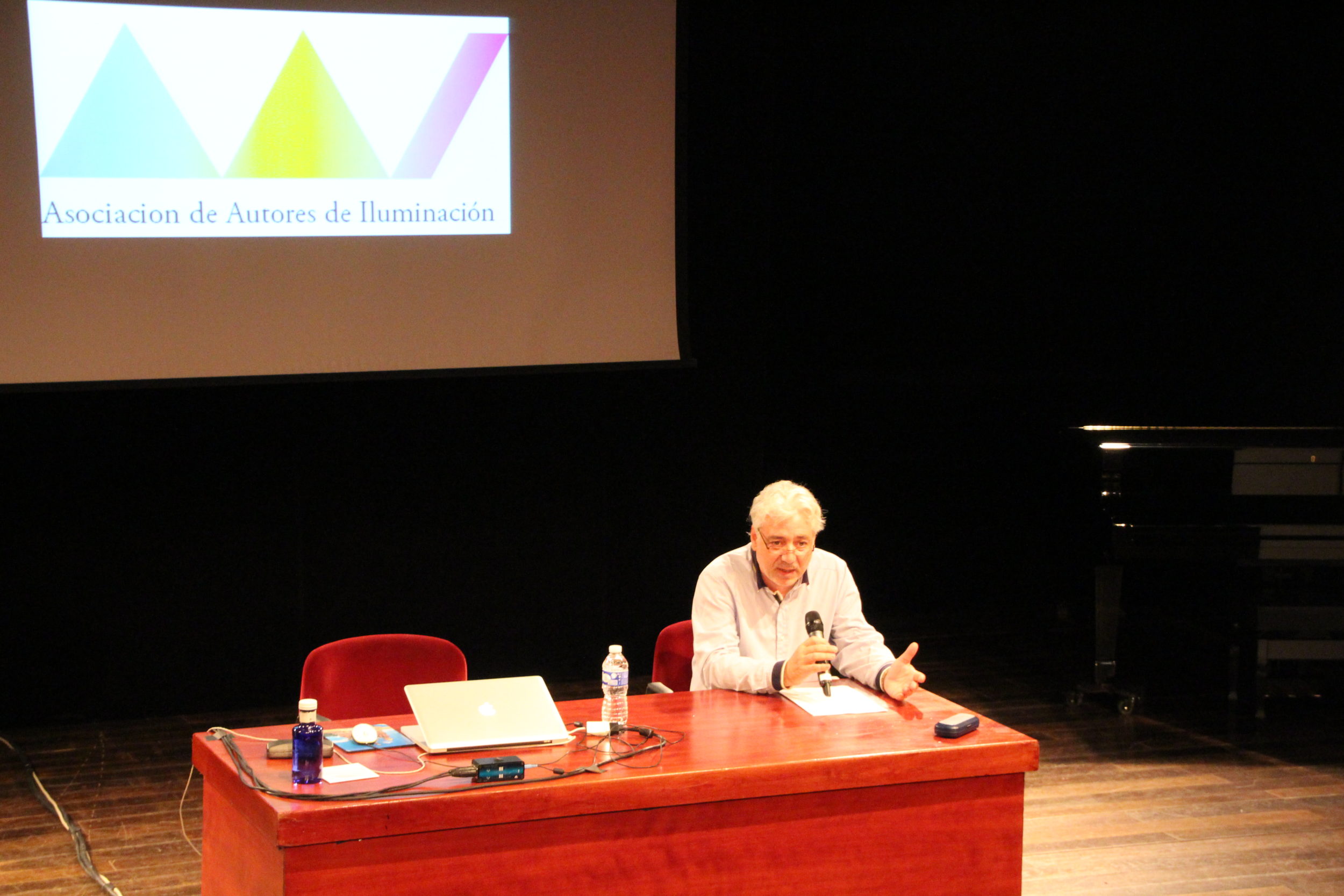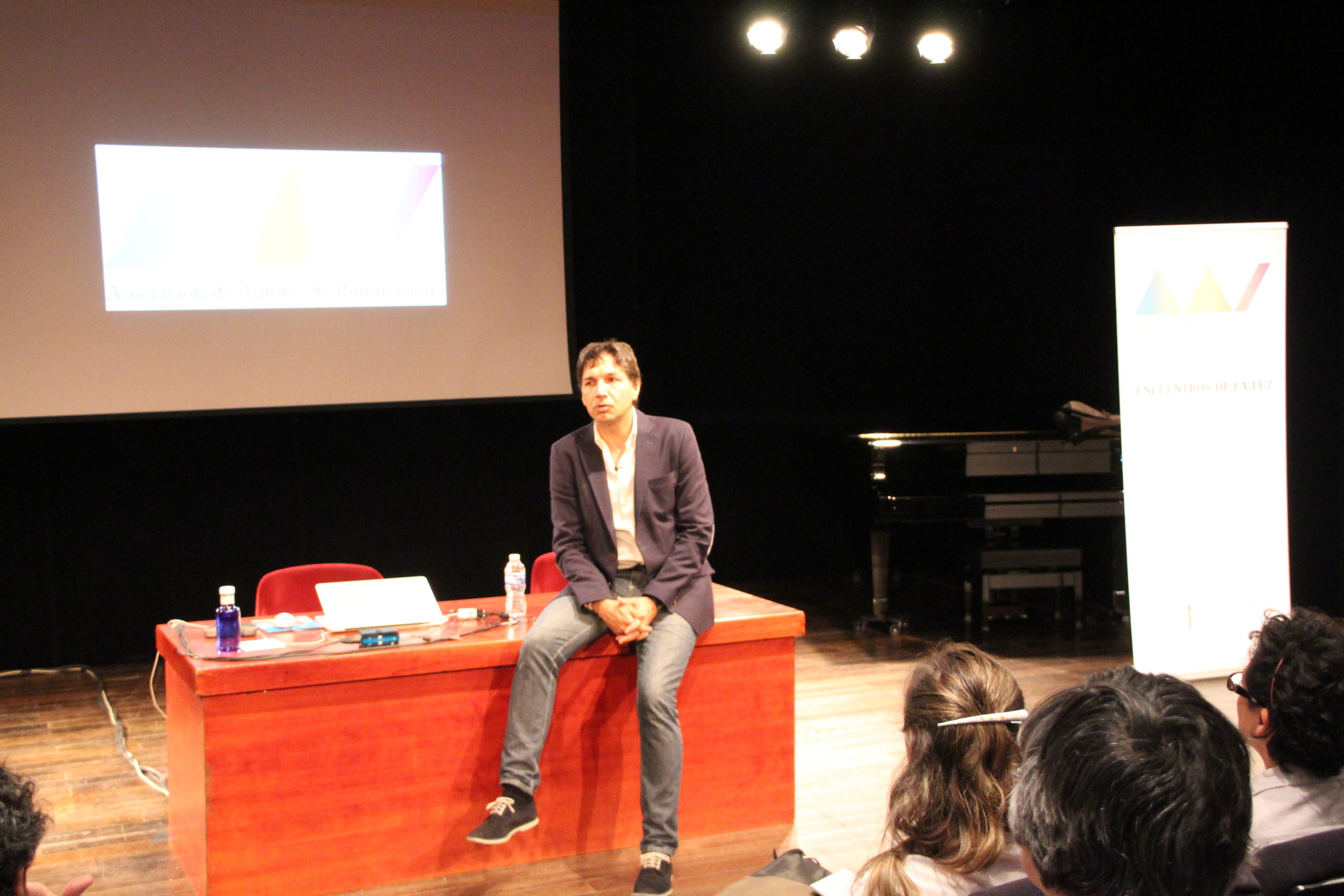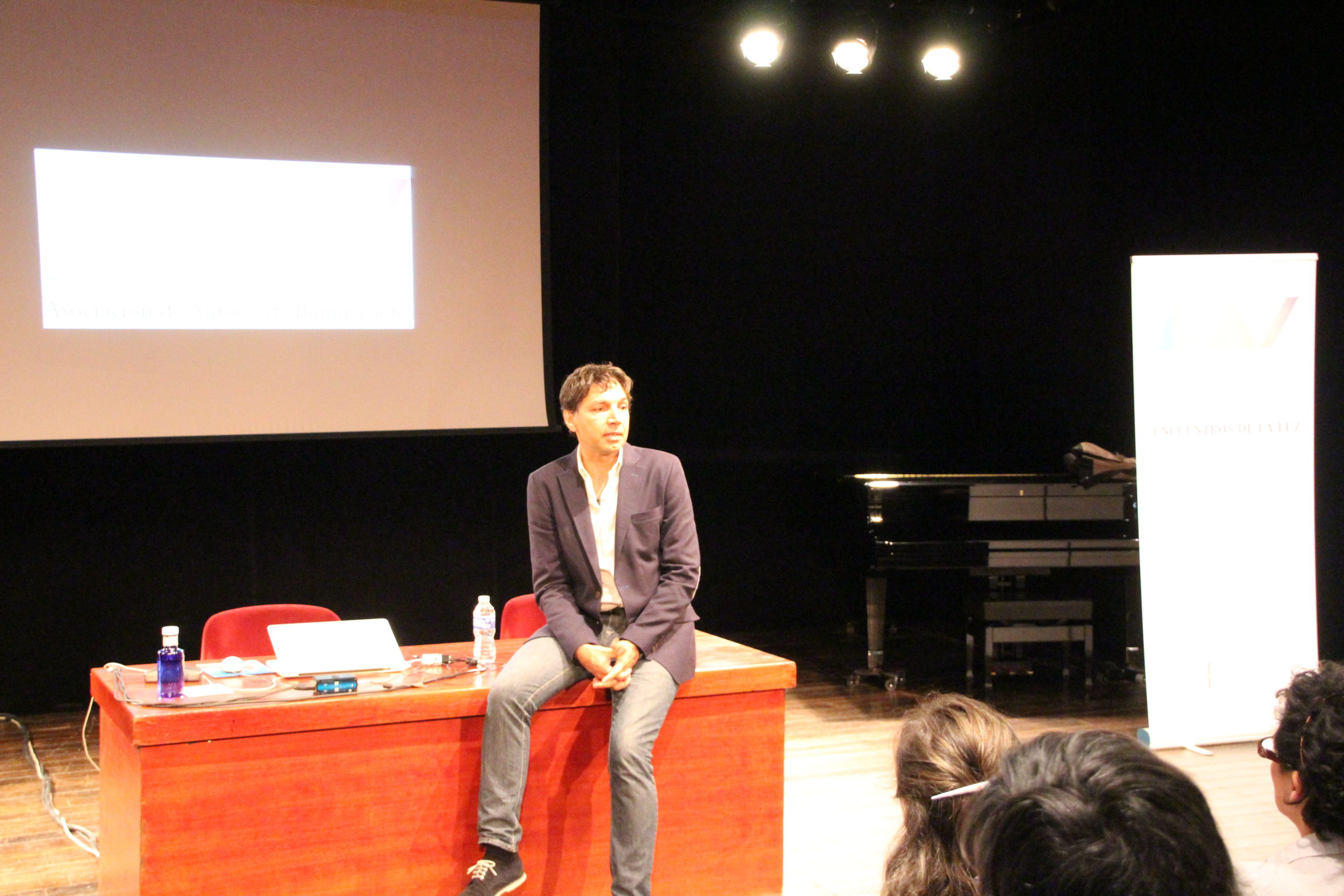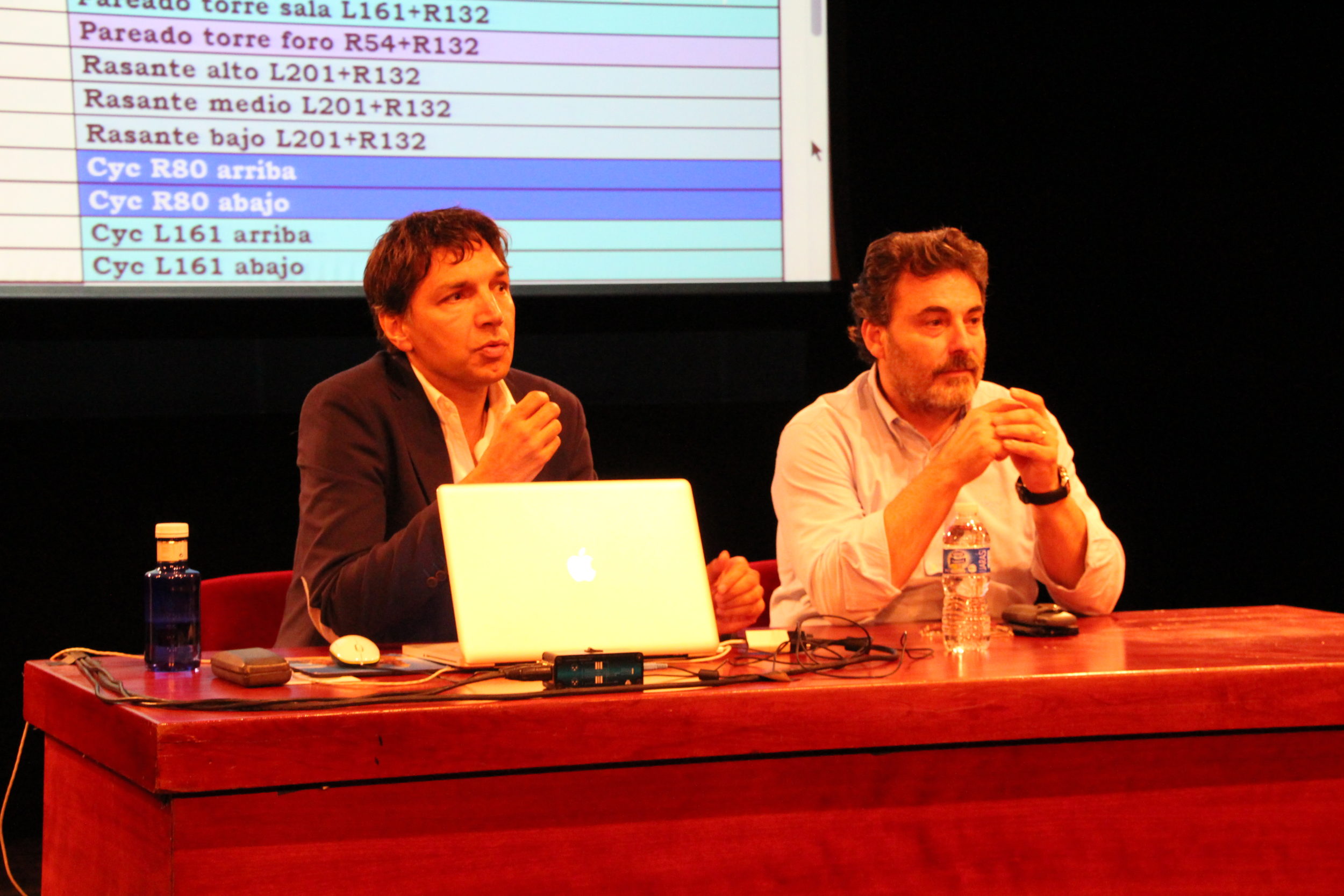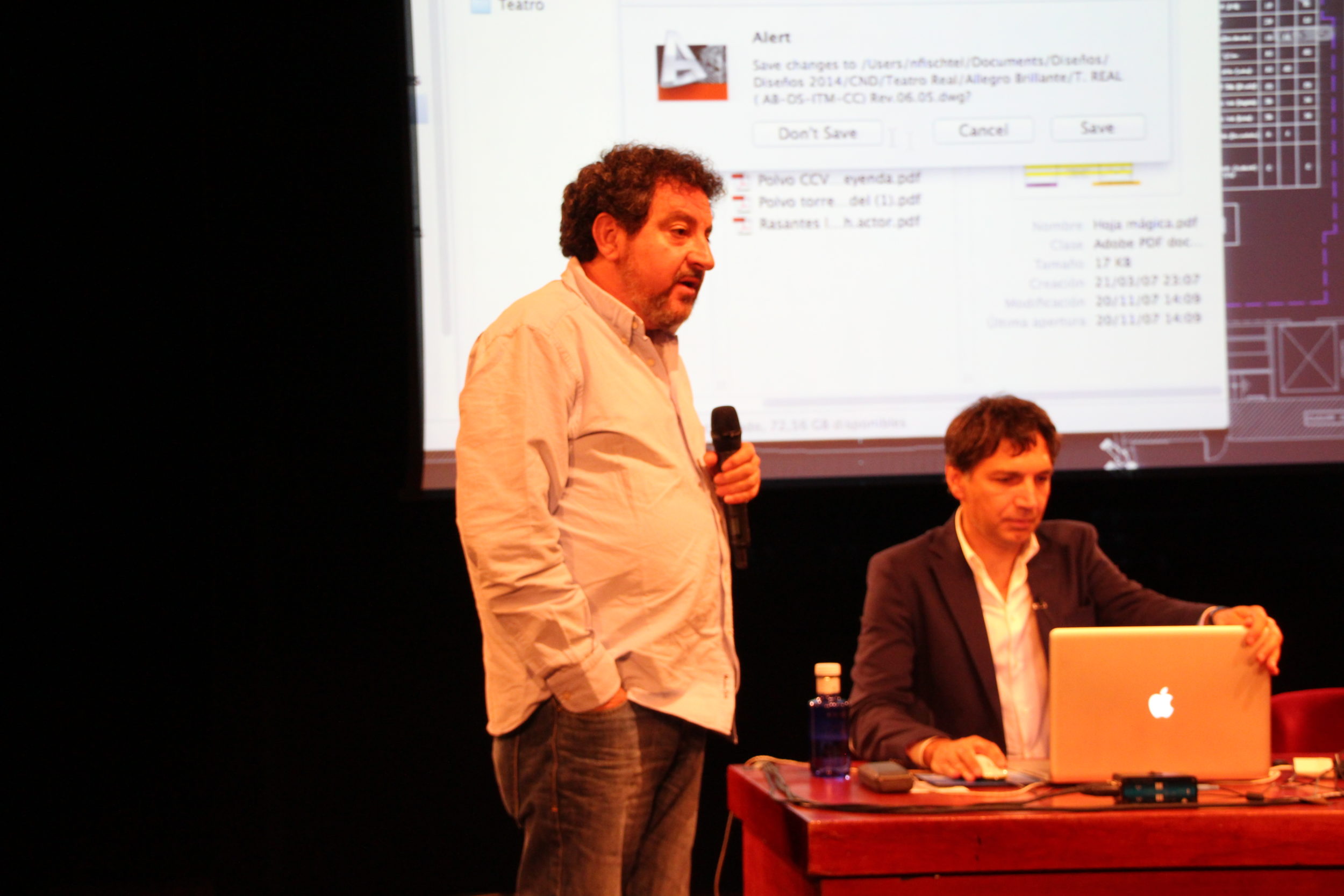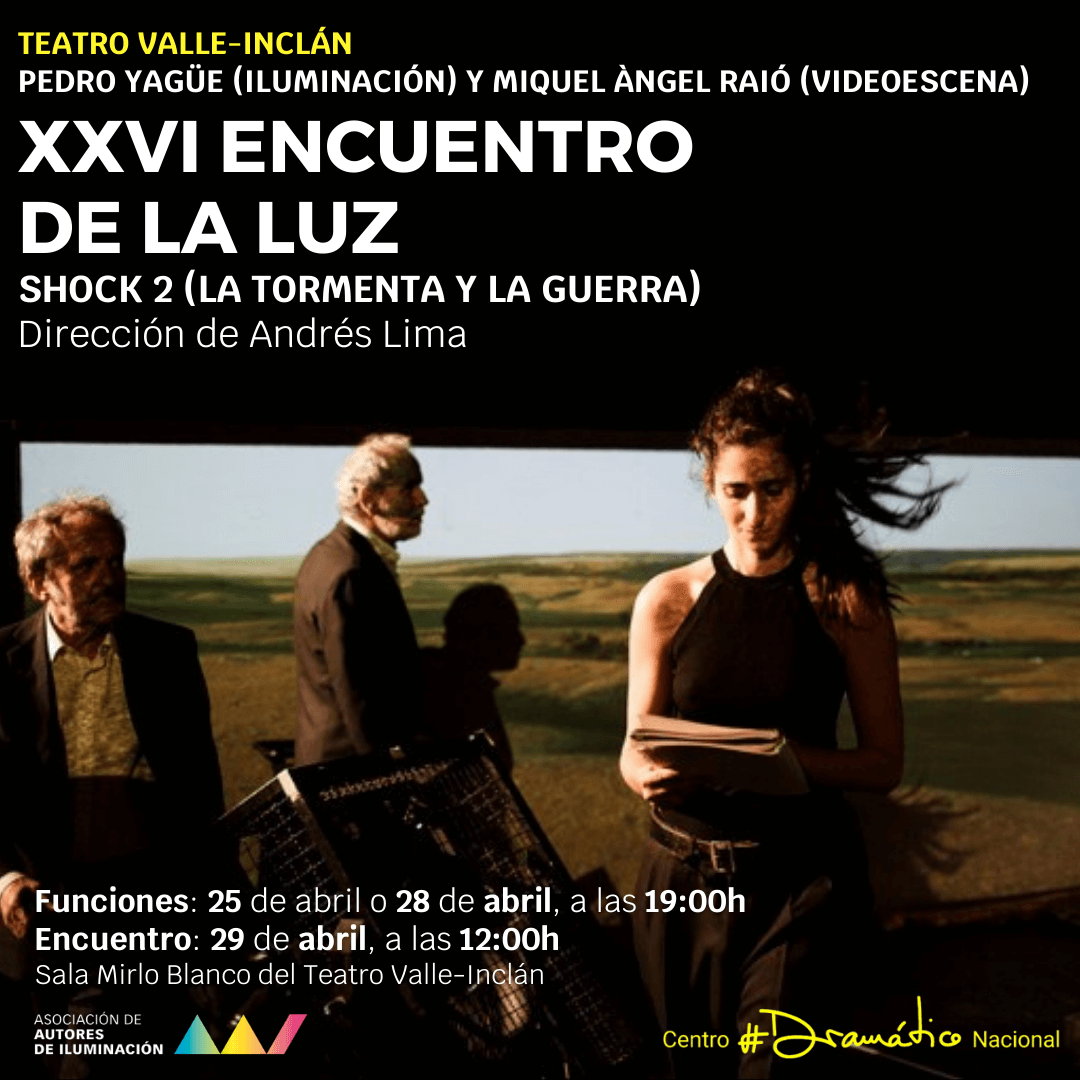On this occasion, it was impossible for us to attend the rehearsal of the show of the National Dance Company that was to star in this 7th Encounter. Some events, beyond our association’s control, led to the decision to hold the company’s rehearsals behind closed doors. On 27 May 2014, Nicolas Fischtel had to present the work in which he had participated, without the important help of live viewing. However, he was able to effectively fill this gap by showing videos, plans and his qualified and entertaining words.
Nicolas Fischtel is an illuminator of great prestige. Well known in the world of dance – having worked with Nacho Duato and many other important choreographers – he is also appreciated in theatre and zarzuela. Resident illuminator at the Teatro Sanpol since 1986. Winner of several awards, he was nominated for the Max Awards in 1999 for “Chicago” and won the Josep Solbes Award in 2006 and 2008.
After the presentation by our fellow illuminator Óscar Gallardo, Nicolás took the floor. And he began by showing his support for the dancers and technicians of the CND, in the face of their labour problems. He then went on to tell us about his career. Born in Chile, he has lived in Spain since he was nine years old. The son of an actor father and a journalist mother who also worked in the theatre, he remembers how he used to run around the stage as a child. He went on to talk about his love of music, which led him to set up his own sound company with some friends in the years of the movida. He had to give up professional sound because of ear problems. So he went to London to make a living. And there she found what would be her true profession: the Light. Admitted to RADA he trained in stage lighting design. He had the possibility to carry out projects, as well as to choose a mentor. This was none other than the master Francis Reid. He then won a scholarship to Yale University where he studied with Jennifer Tipton. On his return to Spain and through Tipton, he was called to work with Nacho Duato at the CND. He was its technical director from 1991 to 1996. Afterwards, he has worked as a freelance in dance, theatre, zarzuela, musicals…
He then spoke to us about the characteristics of the production that the CND has presented at the Teatro Real. The program consisted of four choreographies. Each piece with different choreographers and illuminators. He lit the first, Balanchine’s “Allegro Brillante”. In this type of shows the problem arises when having to make four illuminations totally independent of each other, but nevertheless must be performed on the same stage and followed in time. For this reason it was necessary to start from the same plan where a standard general environment was built (four zones -without the need to define the center- four pairs of streets and high sides in points and half rods) with two colors, plus the color changes (scroller) in the cons. To this were added the punctual ones for each show and the HMI of 2.5 Kw that one of them needed. As well as the panorama in two shades of blue (R-80 and L-161) backlit from above and below.
“Allegro Brillante”, a very classical choreography, had to be illuminated with a lot of light, and especially a lot of brightness, without disturbing the dancers in their turns. For this the streets do not exceed in intensity and the brightness comes from above, high sides of the tips and half of the rod. The blue flood of the panorama dominates the space with the intense primary blue R-80. In the “step by two” the light becomes a little more intimate and goes down a little bit. Nicolas used tracking shots on the main dancers, not obvious but with great subtlety, diffused light, almost imperceptible.
The second piece, “Delibes suite” was illuminated by the choreographer himself, Jose Carlos Martinez, artistic director of the CND. Very simple: when the curtain rises, there is only light in the panorama, backlit from below. The dancers silhouette themselves in the backlight. Little by little the light grows and the general atmosphere is created. It remains so until the end.
In the following piece “In the middle somewhat elevated”, the peculiar style created by the choreographer William Forshyte could be seen. Light at the same time minimalist and powerful: six HMI of 2,5 Kw (two per rod) in contra position. They are turned on suddenly through curtains at the beginning of the choreography and are also turned off suddenly at the end of the piece. The show ends. That’s all there is to it. A large pool of light with the glow of HMI. The floor glows and reverberates generating a secondary light source. Thanks to the fresnel lenses, the edges are diffuse, creating a “halo” of darkness. Dancers move in and out of the flood of light. The main light is from against, the bounce from the ground acts as a fill.
The latest choreography “Casi-casa” by Mats Ek, uses a very theatrical language. Several objects on the stage: an armchair, a door, a light box… with some tilting movement. A tick-tock, and a light that fluctuates from the street outlining the floor start the number. This mystery of chiaroscuro, with a narrow area around the armchair plus the light box, lingers for a long time. Afterwards, the area expands with choreographic dramaturgy. The objects seem to come alive with the dancers and the light. Other artifices are used: smoke from the light box and a moon-like ceiling.
The event ended with a wide-ranging debate in which Ángel Palomino, technical head of lighting at the Teatro Real, was kind enough to take part. There were a lot of questions, there was a lot of discussion. I want to summarize what was said there with a phrase as simple as wise that Angel repeated with good reason: “You have to arrive at the assembly with your homework done”.
Pau Ferrer (A.A.I.)
Video Allegro Brillante (CND) : http://vimeo.com/96847370
Full video of the meeting recorded and edited by the students of CIFP Jose Luis Garci (AAI collaborating partner)




